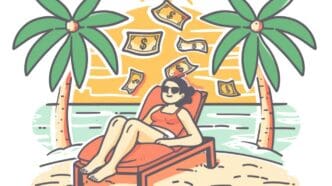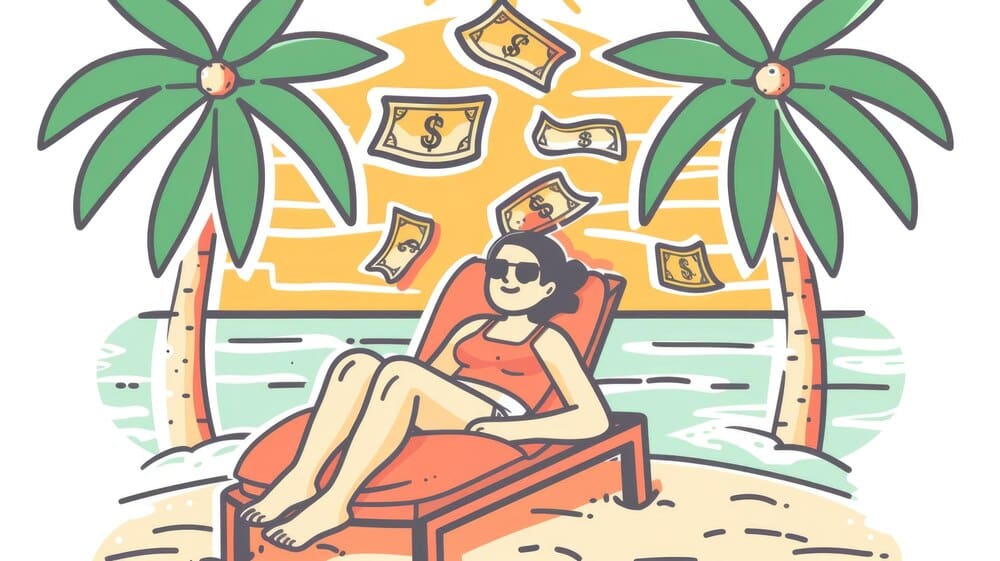For South Florida residents grappling with one of the nation’s most expensive markets, achieving financial freedom is increasingly dependent on a crucial strategy: shifting focus from solely earning active income to building robust streams of passive income. Active income, the money earned from direct labor like a salary, is the essential starting point for most, but it is passive income—earnings from assets like real estate or investments that require minimal ongoing effort—that provides the true engine for wealth creation and stability in the region’s dynamic economy. Understanding how to strategically convert the fruits of your day job into assets that work for you is no longer a luxury for the wealthy but a necessary roadmap for anyone seeking long-term financial security from Miami to Palm Beach.
The Foundation of Wealth: Active vs. Passive Income
At the heart of any personal finance strategy lies the distinction between how you make your money. The two primary categories, active and passive income, serve different purposes in your financial life, and mastering both is key to building lasting wealth.
What is Active Income?
Active income is the most familiar form of compensation. It is the money you receive in direct exchange for your time and effort.
This includes your salary from a 9-to-5 job, wages earned by the hour, commissions from sales, or tips from a service role. For a software engineer in Miami’s burgeoning tech scene or a hospitality manager in Fort Lauderdale, their paycheck represents active income.
The primary benefit of active income is its relative predictability and immediacy. It provides the consistent cash flow needed to cover essential living expenses like rent, mortgages, groceries, and transportation. However, its fundamental limitation is that it is directly tied to your ability to work; if you stop working, the income stops.
What is Passive Income?
Passive income, in contrast, is money generated from assets you own or control, with little to no daily effort required to maintain it. This is a common misconception; passive income is not “money for nothing.” It almost always requires a significant upfront investment of either time or money.
Think of a landlord who spent months saving for a down payment and finding the right rental property in a neighborhood like Coral Gables. Once a reliable tenant is in place, the monthly rent they collect becomes a passive stream, requiring only occasional oversight.
Other classic examples include dividends paid out from stocks, interest earned from bonds or high-yield savings accounts, and royalties from a creative work like a book or a song. The goal is to create systems or own assets that generate revenue independent of your daily labor.
Why South Florida is a Unique Arena for Income Generation
The economic landscape of South Florida presents both immense challenges and unique opportunities. Its specific characteristics make the pursuit of passive income not just advantageous, but essential for financial thriving.
The High Cost of Living Dilemma
It’s no secret that the cost of living in South Florida has skyrocketed. Soaring housing prices, astronomical property insurance premiums, and rising everyday expenses put immense pressure on household budgets. For many, a single active income, even a substantial one, is no longer sufficient to live comfortably and save meaningfully.
This economic pressure acts as a powerful motivator. Residents are increasingly forced to look beyond their primary job to secure their financial footing, making passive income a critical component of a balanced financial plan.
Key Economic Drivers and Opportunities
South Florida’s economy is a vibrant mix of industries that create fertile ground for both active and passive income generation. The key is to understand how these sectors interact.
The region’s transformation into the “Wall Street of the South” has attracted high-paying finance, private equity, and tech jobs. This influx creates a class of high-earning professionals with significant active income, providing them with the necessary capital to invest in passive ventures.
Simultaneously, the bedrock of the economy remains tourism and real estate. These sectors offer a dual path. You can earn active income by working in a hotel or as a real estate agent, or you can build passive income by investing in a vacation rental property or a Real Estate Investment Trust (REIT) that owns a portfolio of local properties.
From Active Earner to Passive Investor: A Practical Roadmap
The transition from relying solely on a paycheck to building a portfolio of income-generating assets is a deliberate process. It requires a clear strategy tailored to the South Florida market.
Strategy 1: Real Estate Investing
Real estate is the quintessential passive income play in South Florida. The constant influx of new residents and tourists creates persistent demand for housing.
Long-Term Rentals: Buying a condo or single-family home to rent out on an annual basis offers stability. The demand from families and professionals moving to the area for work provides a steady stream of potential tenants. The challenge lies in the high acquisition cost and the responsibilities of being a landlord.
Short-Term Vacation Rentals: Properties in tourist hotspots like Miami Beach, Hollywood, or Delray Beach can generate significantly higher income as short-term rentals on platforms like Airbnb. However, this approach is more management-intensive and subject to a complex web of local regulations and licensing requirements.
REITs: For those who want exposure to the real estate market without the hassle of property ownership, REITs are an excellent option. By purchasing shares in a REIT, you are investing in a large portfolio of properties—from apartment complexes to shopping centers—and receive a portion of the income generated as dividends.
Strategy 2: Investing in the Stock Market
The stock market is one of the most accessible ways for anyone to start building passive income through dividends and capital appreciation.
Dividend-Paying Stocks: Many established companies share their profits with shareholders in the form of dividends. Investing in Florida-based public companies like NextEra Energy (FPL’s parent company) or national blue-chip stocks can create a reliable quarterly income stream.
Index Funds and ETFs: Perhaps the most powerful tool for a new passive investor is a low-cost index fund or exchange-traded fund (ETF). These funds, such as one that tracks the S&P 500, provide instant diversification across hundreds or thousands of companies, minimizing risk while capturing the overall growth of the market.
Strategy 3: Launching a Side Business or Digital Asset
South Florida’s vibrant and entrepreneurial culture is ideal for starting a business that can eventually become a passive income source. The key is to design a business that is scalable and not dependent on your personal time.
This could involve creating an e-commerce brand selling beach-related products, developing a digital guide for tourists, or building an online service business that can be automated or delegated over time. While these ventures begin as highly active endeavors, their potential for passive income is immense once established.
Navigating the Path: Mindset, Risks, and Taxation
Embarking on the journey to financial freedom requires more than just strategies; it demands the right mindset and a clear understanding of the associated risks.
The “Get Rich Quick” Fallacy
It is critical to understand that building meaningful passive income is a long-term game. It is the opposite of a “get rich quick” scheme. It requires patience, discipline, and the willingness to delay gratification by consistently investing time and money over many years.
Understanding the Risks
Every investment carries risk. The stock market is volatile, and values can decline. Real estate markets can experience downturns, and properties can sit vacant or require expensive repairs. A new business venture can fail. Acknowledging and planning for these risks through diversification and careful research is fundamental to success.
A Note on Taxes
In Florida, the absence of a state income tax is a significant advantage. However, passive income is still subject to federal taxes. The way it’s taxed often differs from active income; for instance, qualified dividends and long-term capital gains are typically taxed at lower rates than a salary. It is highly advisable to consult with a qualified financial advisor or CPA to create a tax-efficient investment strategy.
Ultimately, navigating South Florida’s demanding economic environment requires a dual approach. Your active income is your tool—the shovel you use to dig the foundation. But it is the steady, compounding growth of passive income that builds the structure of true financial freedom. By strategically using your earnings to acquire assets that generate income on their own, you can build a more secure and prosperous future in the Sunshine State.







